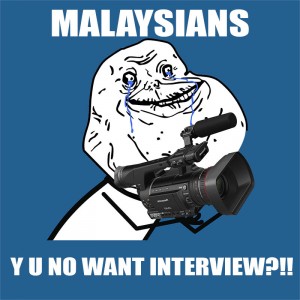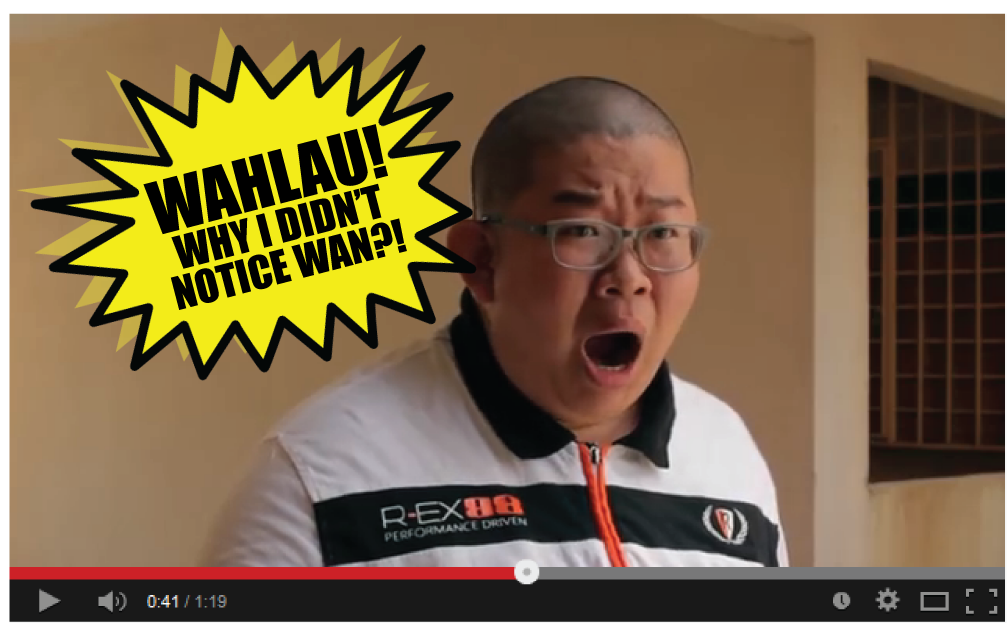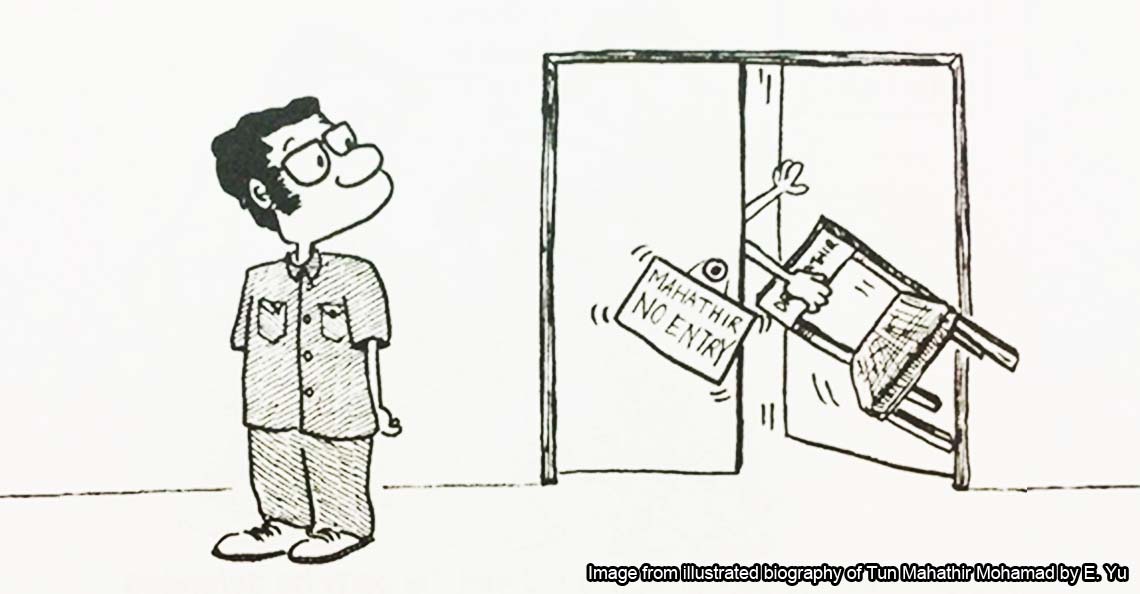7 regular Malaysians share their vivid memories of May 13, 1969
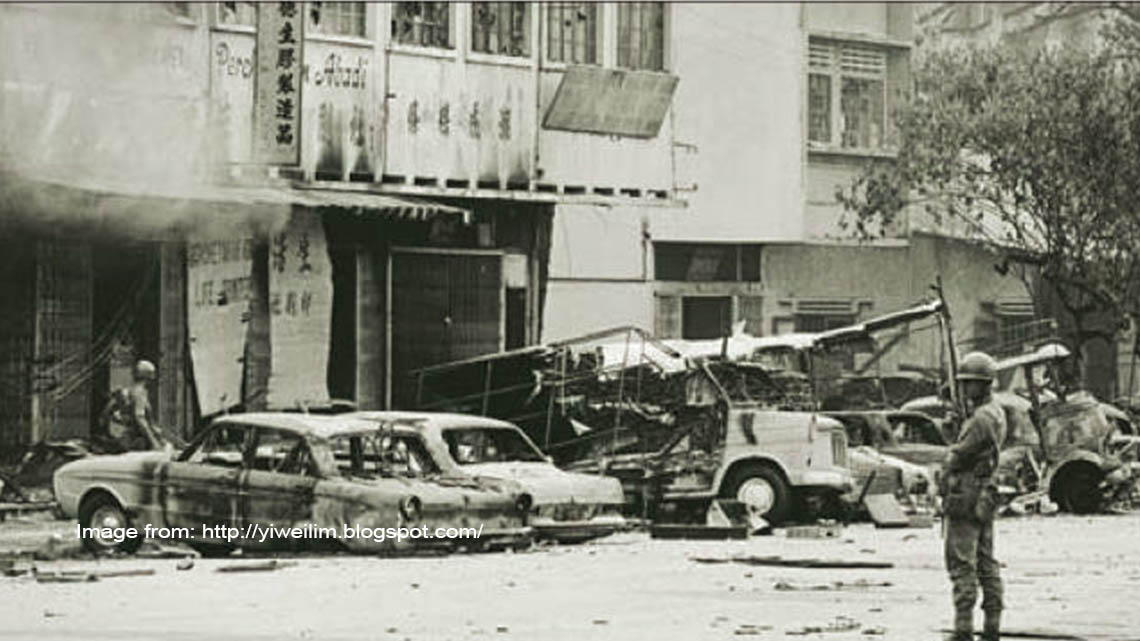
- 10.1KShares
- Facebook9.5K
- Twitter62
- LinkedIn17
- Email124
- WhatsApp321
Imagine if you woke up one morning to find that Malaysians are being killed by their fellow countrymen, and people who used to be friends, colleagues, neighbors, or even the friendly pakcik nasi lemak outside your office are now eyeing you with hatred in their eyes as they hunt you down for no reason other than the color of your skin. Imagine when the neighborhood shops you visit on a weekly basis are nothing but charred cement and brick and your every movement restricted at the threat of death.
Well, that happened exactly forty-six years ago during the May 13 racial riots of 1969 which, by official count, saw almost 200 Malaysians killed by other Malaysians.
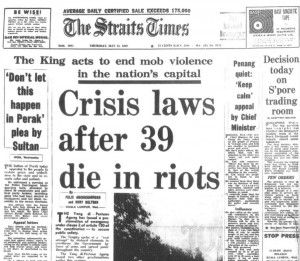
But for most of us reading this, “May 13” is kinda like a buzzword for a worst-case scenario when racial tensions go south (and we don’t mean Johor), a black spot in Malaysia’s relatively young history, and………..um………….. that’s about it. Those of us born after 1969 may know about the incident, but will never be able to fully understand what it’s was like being in the thick of it.
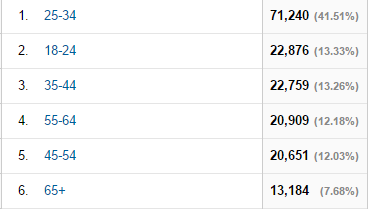
So we figured we’d ask those who did to share their experiences with us (mostly parents of friends). Here’s what they told us…
Note: All pictures used were sourced online and meant for emphasis. The age of our interviewees back in 1969 are highlighted in orange.
1. Aunty Liza, 57. (10 years old)
I was there at the time. I was in Standard 4 and I saw the burning and the killing from Chow Kit Road to my home in Kampung Baru.
My sister and I were buying schoolbooks at the market. On the way back, I stopped to talk to my friend in Jalan Raja Alang while my sister went on home. At about 3pm, it happened.The political parties were protesting or something, with everyone displaying party flags. All of a sudden, people got very rough, like hooligans. All the races were the same, attacking each other. I ran all the way home. I don’t know how fast I ran.
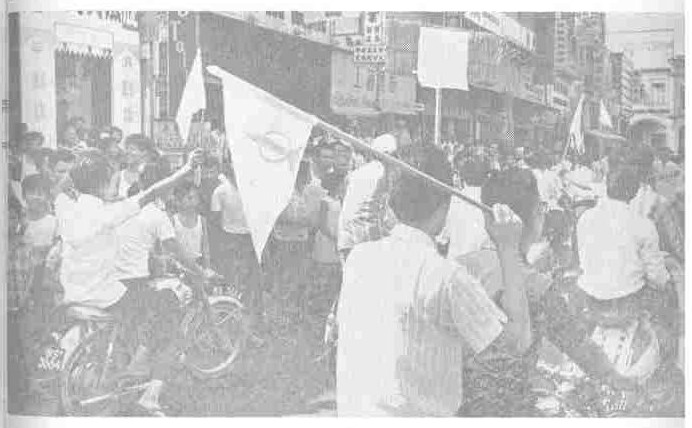
Where I stayed, they threw tear gas till we couldn’t open our eyes and it hurt to breathe. We prayed to God for it to end. The curfew also prevented us from leaving the house, and in those days the toilet was a separate building outside the house so we couldn’t use it during curfew. Anyone who left their houses would be shot by the Gurkha soldiers.
We also couldn’t buy food because of the curfew, and even when they lifted it for a few hours, it cost too much since all the kedai runcit raised their prices. So we made porridge or cut pisang and ate it with rice. Susah. Memang Susah. When we went to the market, we didn’t know who were our enemies and who were our friends. Even my good friend who was Chinese treated us like the enemy – and we were only children then!
How do you view racial harmony today?
I think some still keep what happened [during May 13 1969] in their hearts, and these feelings against other races are passed to their children. During the British times, the Malays, Chinese, and Indians got along together. Why can’t we get along now? I think it’s the politics. Some people don’t think… they just jump into it and follow what the politicians say – Malay, Chinese, Indian… all the same. I pray it won’t happen again, because as I told my children, we are the ones who suffer, and if it happens now, it will be much worse than 1969.
2. StudentFromThe60’s, 64. (18 years old)
I was in Ipoh, doing lower Form 6 when it happened. I can’t remember if this was on the day it happened [May 13] or the next day, but in the morning at school, they announced a curfew. Later on in Buntong, where I lived, there were vans from the Information Department announcing the same thing from their mounted speakers.
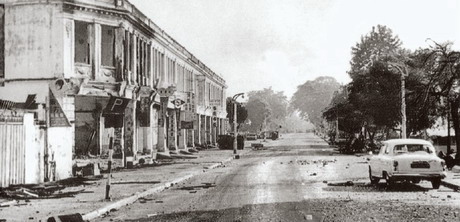
We really didn’t know what was going on other than that something was happening in KL.
And remember ya, in those days getting the news in a day was considered good already so we only found out what happened 2 days later.
We were quite relaxed with the curfew… we stayed indoors for a while but we eventually started going out. Nothing happened, in fact it was a pretty quiet week as far as we were concerned. Perhaps it was different in the urban areas like Ipoh town but we were in the Tamil settlement and everyone was mostly Indian with a few Chinese – so I guess we were in a “safe” zone. I think my parents might have stocked up on supplies though, but they really weren’t that concerned.
How do you view racial harmony today?
Oh, it was much better in those days. I can hardly imagine too many concerns, but then again we were a divided society with each race having their own village and community. Generally people were more tolerant in those days, until it became political. Even today, socially speaking, people are okay – just not when politics get involved.
3. Lyn, 67. (20 years old)
I was coming back from teaching a class in Seremban with a girlfriend. It so happened my car wasn’t available at the time so we took a taxi. As we were passing Cheras at about 7pm, some Chinese guy suddenly started waving our taxi down. It was the taxi driver’s friend, also a taxi driver, who told us to not go into town, saying there was a curfew due to trouble.
“What kind of trouble?” He asked.
“Killings.”
The taxi driver told us he was going to turn around and head back home to Kajang, and his friend offered to let us stay with them. We didn’t know what was going on… we didn’t even know what a curfew was! I was only 20 la!
When we got there, we saw his children sharpening knives. Suddenly, we heard drums from the Malay kampung nearby. The villagers shouted in Cantonese “Lei la! Lei la!” [“They’re coming! They’re coming!”] and we all ran in to hide. Then there was silence. Nothing happened. The drums went on and off for a few times that night.
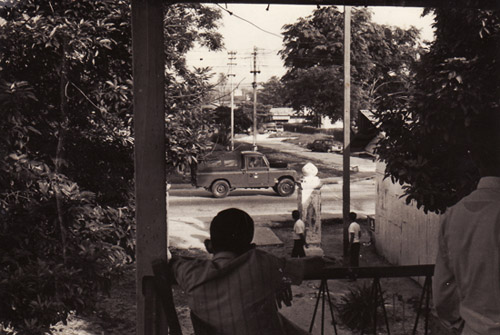
The next morning, we happened to see a convoy of army trucks and tried to wave them down for help but they ignored us. One of the villagers stopped us and asked us to get inside. He said another villager was beaten up after waving one down.
It was very hot in the house and we ended up taking a nap to escape the heat. Suddenly we heard people shouting “RUN!” “RUN!”
There was a safer gathering place nearby in case the wooden houses in the village were set on fire. So we ran to an abandoned apartment building. The unit was so packed we couldn’t stretch our legs or stand up in case someone saw our shadow.
The next day, the taximan told us that they lifted the curfew in Pudu, so he sent us back to the Methodist Girl’s Hostel. I managed to contact my mother, and when things settled down a bit, brought my family over to stay at the hostel. My sister told me that they could see bodies floating down the Klang river.
The Malay gardener took care of the hostel residents by saying there were no Chinese there, even though his own friend’s family (A Malay) was killed by the Chinese.
I thank my lucky stars that I didn’t have a car that day. If I did, I would have driven straight into town and… who knows what might have happened. I’m also extremely thankful for the taxi man who took us in. We dropped by with some foodstuff a few months after to thank him for his kindness.
How do you view racial harmony today?
I think it’s improved since those days. Young people are more united now, but it’s only the politics that’s creating racial tension. I married a Malay, but I always remind my daughters to not forget their Chinese roots. We can’t let these racial riots happen again, that’s the most important lesson.
4. Ahmad, 70. (22 years old)
[CILISOS note: En. Ahmad has passed away and this story was related to us by his wife]
My husband was an oil palm estate assistant manager in Perak. On that day, some of the estate workers – all Malaysian Indians – left their quarters to buy lunch.
Unfortunately, Emergency (curfew) was already declared and as the workers were venturing out of the compounds of the estate, they were stopped by a troop of soldiers who drew their guns at them. My husband heard the shouting and loud voices from where he was living and went out to see what was going on.
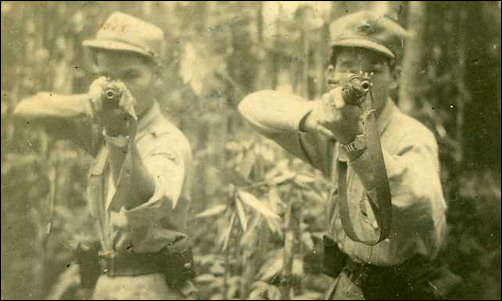
The minute he stepped out of the estate gates, an army personnel screamed for him to stop and pointed his gun straight at my husband. After some explanation, they were all allowed back into the compound. Aside from the historical, social and political impact of May 13th,
My husband will forever remember that day as the day he had a gun pointed at him.
5. PrincipalMediaplusResearchConsultancy, 74. (26 years old)
[CILISOS note: Our interviewee asked us to use this name]
My friends and I were attending a party on the eve of May 13, 1969 to celebrate a friend’s birthday at her house in Old Klang Road when we first heard the news about the curfew on radio. We decided to end the party and send everyone back.
Early next morning, my mother woke me up to say that our neighbor wanted to speak to me. When I went down from the second story-flat, he told me that there were bodies floating in the nearby Klang River and asked me to help fish them out.
Ignoring my mother’s protests, I went with him to the river bank. Using long bamboo sticks, we managed to pull three bodies to the edge of the bank. I remember that one of them had the head cut open, presumably by a parang.
That was when the soldiers came and chased us away, saying that we should be indoors because of the curfew.
I decided to volunteer with the Red Cross where my friend and I became part of the hastily-created Social Services Committee. They gave us curfew passes and put us in charge of night duty for sending relief supplies to affected families in the city.
We spent the next few months going around in my car helping to distribute food parcels and medical aid. Needless to say we encountered many scenes of destruction along the way, particularly in the Chow Kit area. The most vivid memory etched in my mind was that of burning shop houses, including a photo studio along Jalan Tunku Abdul Rahman.
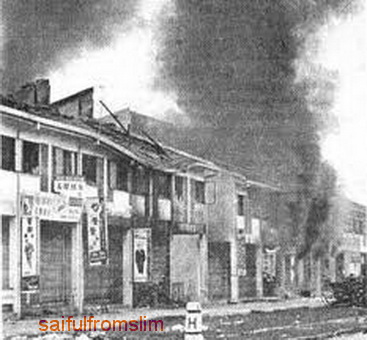
There were instances when even Red Cross officials were viewed with suspicion by some of the soldiers stationed in and around the city. On one occasion, a soldier demanded to examine a bag of rice and even stuck a bayonet into it, claiming that we might be smuggling weapons.
After the conflict the Red Cross volunteers, myself included, were given a commendation from the government when parliament was resumed in 1970.
How do you view racial harmony today?
What was remarkable was that in those days, we worked shoulder-to-shoulder in a time of crisis with race not even crossing our minds. In a strange way, the aftermath of May 13 1969 brought the races together… sort of a wakeup call shocking us out of our complacent attitudes when it came to racial harmony. Now, people, especially the younger generation have become very cautious and tend to shy away from assisting their fellow Man. We just don’t step forward anymore.
In spite of the blame-game and political rhetoric that followed, our generation has basically remained steadfast in the conviction that we must do our part to uphold peace and harmony especially in our daily interactions with fellow Malaysians. It is my fervent hope that the next generation will maintain and preserve this proud and enviable record.
6. Lau Chee Hong, 65. (18 years old)
[FYI, this is our editor’s father, aka The DADITOR!]
We were staying at our Jalan Terkukur house which served as our “hostel” during our schooling days in KL. On that fateful day, the neighborhood remained rather quiet until later in the evening when we heard announcements on the radio that a curfew has been imposed. Not surprisingly, they didn’t mention any reasons.
The following day, we noticed a barricade had been erected at the end of the street where we lived. That night, a small number of young Chinese Jinjang-Joe type characters showed up at our door, asking for “volunteers” to patrol the neighborhood. When we told them we were all students, they moved on.
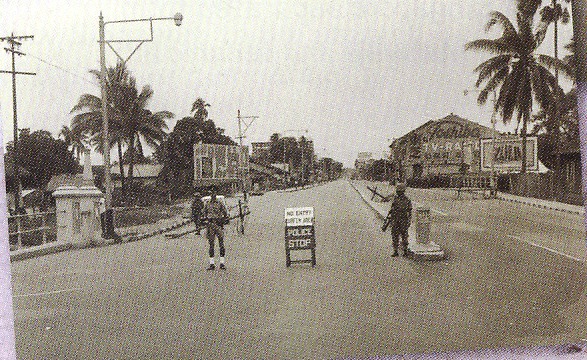
Three or four days later, my father showed up in his car. He had come to take us back to Rawang, which was considered low-risk. Along the way, we were stopped by some soldiers on patrol, but father had a curfew pass. One of the steps the government took was to form community Goodwill (“Muhibah”) Committees, and dad volunteered his services so he was given a curfew pass which allowed him to move around during curfew hours.
On our first bus ride to school 4-5 weeks later, we were shocked to see quite a few torched buildings and vehicles (whatever few left on the roads) along our usual bus route from Sentul to Victoria Institution.
I recall watching, on those old black and white TVs, stories and first-hand accounts of inter-racial camaraderie. Neighbours helping each other to get by. There were even some stories of people sheltering neighbors or friends of another race.
How do you view racial harmony then and now?
Demographics was very different then. I had very few Malay classmates in primary school and even fewer in secondary school. I did have a Malay friend, with whom I was close enough to visit in Kampung Baru.
In all our schooling years, I think I can say with sincerity, we were all color-blind. We all ate the same food at the same canteens (they were called “tuck-shops” then). The word halal did not exist in our common vocabulary.
If you were to pick up a national paper (English or Malay) in the 60’s and compare with one today, you’d notice that journalists then dealt their stories with little racial or religious slants or bias. The words hudud or sharia was unheard of then. Words like Tuhan & Allah were used interchangeably, without anyone making a fuss.
Very much so now than ever before, it is a “Us & Them” mentality in all aspects of Malaysian life.
7. Dato’ Derrick Fernandez, 66. (20 years old)
I was in Kuala Lumpur working as a journalist with BERNAMA right in the heart of the city, nearby Kampung Baru where the first incident blew up. I was on leave that day but reported to the office two days later.

We had press cards and our press car stickers allowed us authorization to travel during curfew. When I reported to the office, two female Chinese cadet reporters living in Chow Kit had yet to return home and needed to go home to shower and clean-up.
These two girls were caught in the conflict, protected by their Malay colleagues when the mob had arrived at our office demanding if any Chinese were in the premises.
A young Malay office boy was also stuck in the office, too fearful to return to his Sungei Besi home.
I sent them all back to their respective homes, having to go through a number of police-manned checkpoints. At Chow Kit, I had to let the Malay boy off so I could go with the two girls first and came back for him later.
How do you view racial harmony today?
Even then, at its worst, our racial tolerance and understanding was much better than it is today. A number of extremists (from both sides) unnecessarily incited groups of assembled outsiders to create havoc. During the curfew breaks we mingled and enquired about each other, and in the markets most of the Chinese traders continued to sell to all their patrons despite shortages in some food items.
Today, it’s just crap. It almost seems that the people leading our country are bent on enriching themselves at the expense of the Rakyat without conscience. We need to make it such that good and decent Malaysians can rise again to realize our true potential, so that we’re at least on par with Singapore.
So what have we learnt over the past 46 years?
After almost half a century, the legacy of May 13 has become sort of a racial bogeyman to those of us lucky enough to not experience it. We know it as something bad, something that the older generation talk about with a sigh in their voice, and something that politicians bring up whenever they need to play the racial unity card.
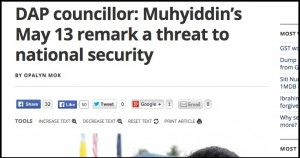
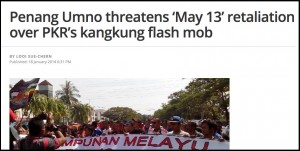
Here’s what another one of our interviewees, Ahmad Nesfu, 63 (17 years old) said about our current situation:
50 years ago racial harmony was excellent. We got along well, but there were economic difference because of the British legacy carving out the races into specific sectors. Indians and plantations, Chinese in tin mines, and Malays in the civil service.
Politicians still haven’t learnt from the incident. They are the cause of the problems. Malay politicians pushing religion and non-Malays pushing vernacular schools. These are further factors for division. Rising Islamization for political ends and championing of [segregated] communities by continuing vernacular schools, which should have been abandoned. So the current position is worse off.
Ironically, we also made extra sure we covered an equal amount of Indians, Malays and Chinese in this article to ensure we weren’t held for leaning to one side of the story.
Yes… paranoia all around, and it’s not just May 13 too. The shadows of the Sedition Act, POTA, dan lain lain all seem to hang over anyone voicing an opinion outside of a private space.
And ironically enough, it happened to this article.
We initially wanted to present this as a video but when we went to Mid Valley last week, we were rejected 10 times in a row by both old and young people. Like, literally no one wanted to be interviewed.
And even when we switched back to the article format, most (99%) of our interviewees did not want to use their real names. Of course, we understand their concerns and we don’t blame them for it since people have gotten in trouble with the Sedition Act for voicing their professional opinions to the media.
But we’re not highlighting their stories for shock value or to capitalize on the many lives lost for clicks and shares. We are sharing their stories because they are first-hand accounts of what we might experience if it was to happen again, rather than just a blurb read in the history textbooks. After all, in the often-misquoted words of philosopher George Santayana:
“Those who cannot remember the past are condemned to repeat it”
We actually got a few more experiences shared with us that we just didn’t have space to put in, unfortunately, but let us know if you’d like us to do a Part 2 next year.
In the meantime, do ask your folks what it was like back then. We promise it’ll be an enlightening experience.
- 10.1KShares
- Facebook9.5K
- Twitter62
- LinkedIn17
- Email124
- WhatsApp321

